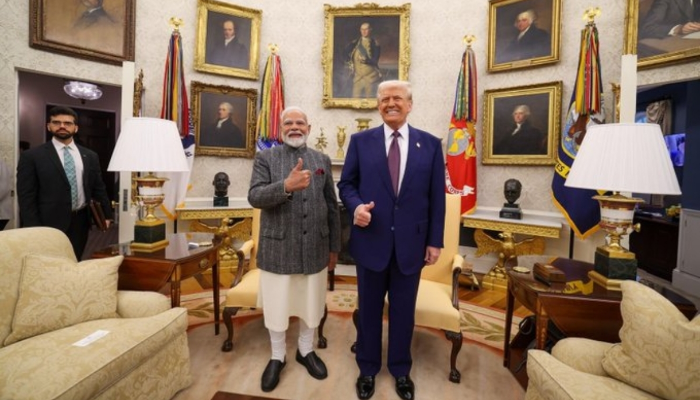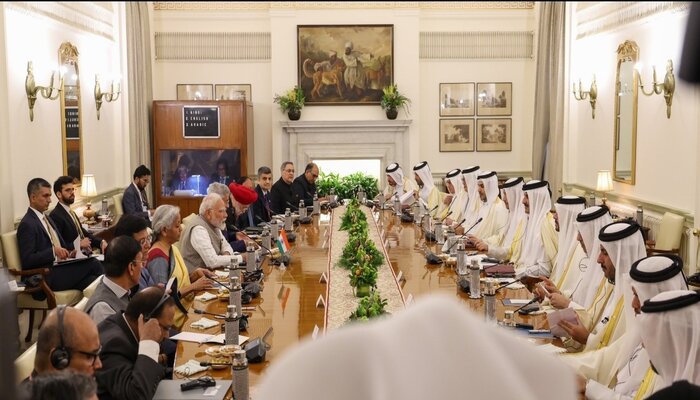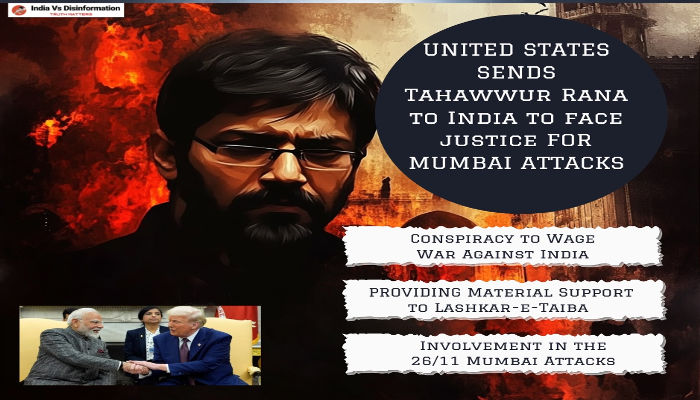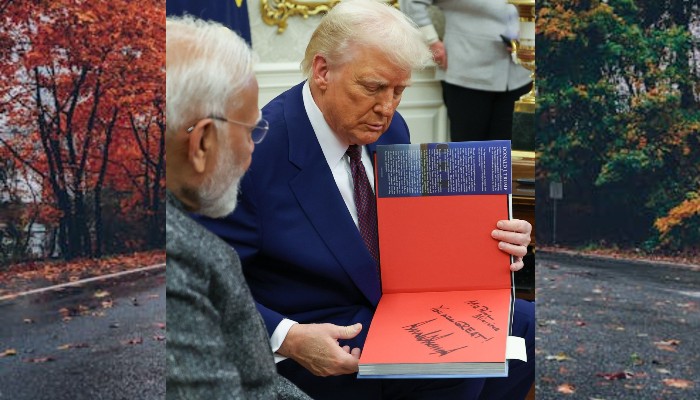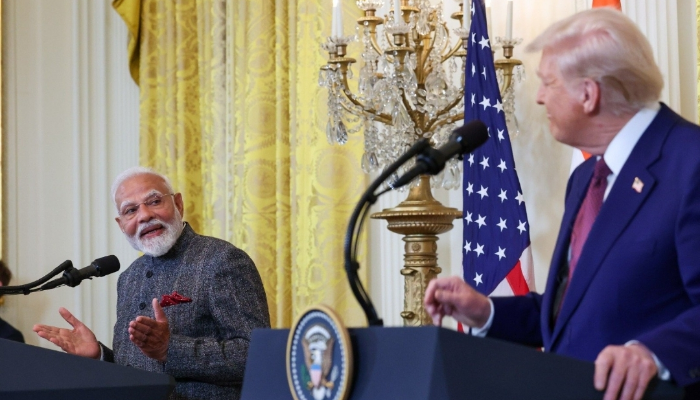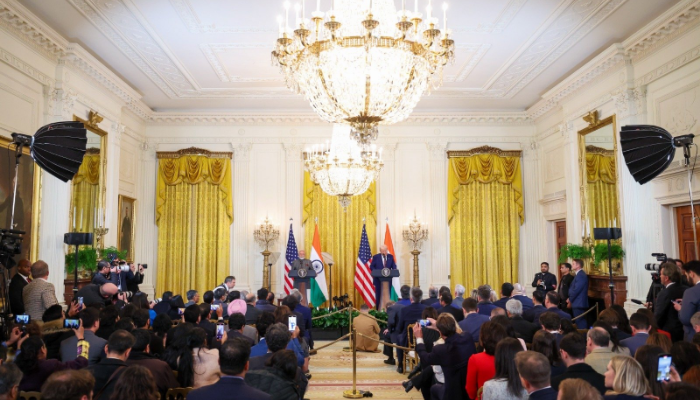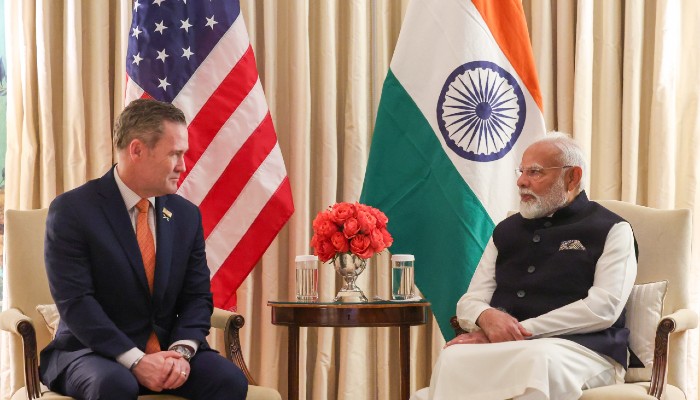Meeting in Washington DC on Thursday (February 13, 2025), Prime Minister Narendra Modi and President Donald Trump set the stage for greater strategic cooperation across areas like defence and cutting-edge technology by launching a new initiative – the “U.S.-India COMPACT (Catalyzing Opportunities for Military Partnership, Accelerated Commerce & Technology) for the 21st Century” – to drive transformative change across key pillars of cooperation.
Under this initiative, they committed to a results-driven agenda with initial outcomes this year to demonstrate the level of trust for a mutually beneficial partnership, a Joint Statement issued after their meeting said.
The steps announced include a new 10-year Framework for the U.S.-India Major Defense Partnership in the 21st Century, procurement and co-production in India of latest defense systems, and a new initiative to scale industry partnerships and production.
India and the US have also decided to expand military cooperation across all domains – air, land, sea, space, and cyberspace.
“America has an important role in India’s defense preparedness. As strategic and trusted partners, we are actively moving in the direction of joint development, joint production and transfer of technology,” Prime Minister Modi later said.
US to Expand Defense Sales and Co-production With India
Here are key takeaways from the Joint Statement issued after talks between Prime Minister Modi and President Trump:
* US announces a review of its policy on releasing fifth generation fighters and undersea systems to India.
* New procurements and co-production arrangements for US-made “Javelin” Anti-Tank Guided Missiles and “Stryker” Infantry Combat Vehicles in India.
* Procurement of six additional P-8I Maritime Patrol aircraft.
* Negotiations this year for a Reciprocal Defense Procurement (RDP) agreement.
* New initiative – the Autonomous Systems Industry Alliance (ASIA) – to scale industry partnerships and production.
According to the Joint Statement, the US would expand defense sales and co-production with India to strengthen interoperability and defense industrial cooperation
The two leaders also announced plans to pursue this year new procurements and co-production arrangements for “Javelin” Anti-Tank Guided Missiles and “Stryker” Infantry Combat Vehicles in India to rapidly meet India’s defense requirements.
They also expect completion of procurement for six additional P-8I Maritime Patrol aircraft to enhance India’s maritime surveillance reach in the Indian Ocean Region following agreement on sale terms.
During their talks, Prime Minister Modi and President Trump welcomed the significant integration of US-origin defense items into India’s inventory to date. These include C‑130J Super Hercules, C‑17 Globemaster III, P‑8I Poseidon aircraft; CH‑47F Chinooks, MH‑60R Seahawks, and AH‑64E Apaches; Harpoon anti-ship missiles; M777 howitzers; and MQ‑9Bs.
Review of Arms Transfer Regulations
India is a Major Defense Partner with Strategic Trade Authorization-1 (STA‑1) authorization and a key Quad partner. To this end, the US and India will review their respective arms transfer regulations, including International Traffic in Arms Regulations (ITAR), in order to streamline defense trade, technology exchange and maintenance, spare supplies and in-country repair and overhaul of U.S.-provided defense systems, the Joint Statement said.
The leaders also called for opening negotiations this year for a Reciprocal Defense Procurement (RDP) agreement to better align their procurement systems and enable the reciprocal supply of defense goods and services.
Prime Minister Modi and President Trump pledged to accelerate defense technology cooperation across space, air defense, missile, maritime and undersea technologies, with the U.S. announcing a review of its policy on releasing fifth generation fighters and undersea systems to India.
Building on the U.S.-India Roadmap for Defense Industrial Cooperation and recognizing the rising importance of autonomous systems, the leaders announced a new initiative – the Autonomous Systems Industry Alliance (ASIA) – to scale industry partnerships and production in the Indo-Pacific.
Expanding Bilateral and Multinational Military Cooperation
The leaders also pledged to elevate military cooperation across all domains – air, land, sea, space, and cyberspace – through enhanced training, exercises, and operations, incorporating the latest technologies. The leaders welcomed the forthcoming “Tiger Triumph” tri-service exercise (first inaugurated in 2019) with larger scale and complexity to be hosted in India.
In a significant move, the two leaders committed to break new ground to support and sustain the overseas deployments of the U.S. and Indian militaries in the Indo-Pacific, including enhanced logistics and intelligence sharing, as well as arrangements to improve force mobility for joint humanitarian and disaster relief operations along with other exchanges and security cooperation engagements.
During their talks, Prime Minister Modi and President Trump also resolved to advance military cooperation in multinational settings to advance global peace and security. The leaders applauded India’s decision to take on a future leadership role in the Combined Maritime Forces naval task force to help secure sea lanes in the Arabian Sea, the Joint Statement added.

